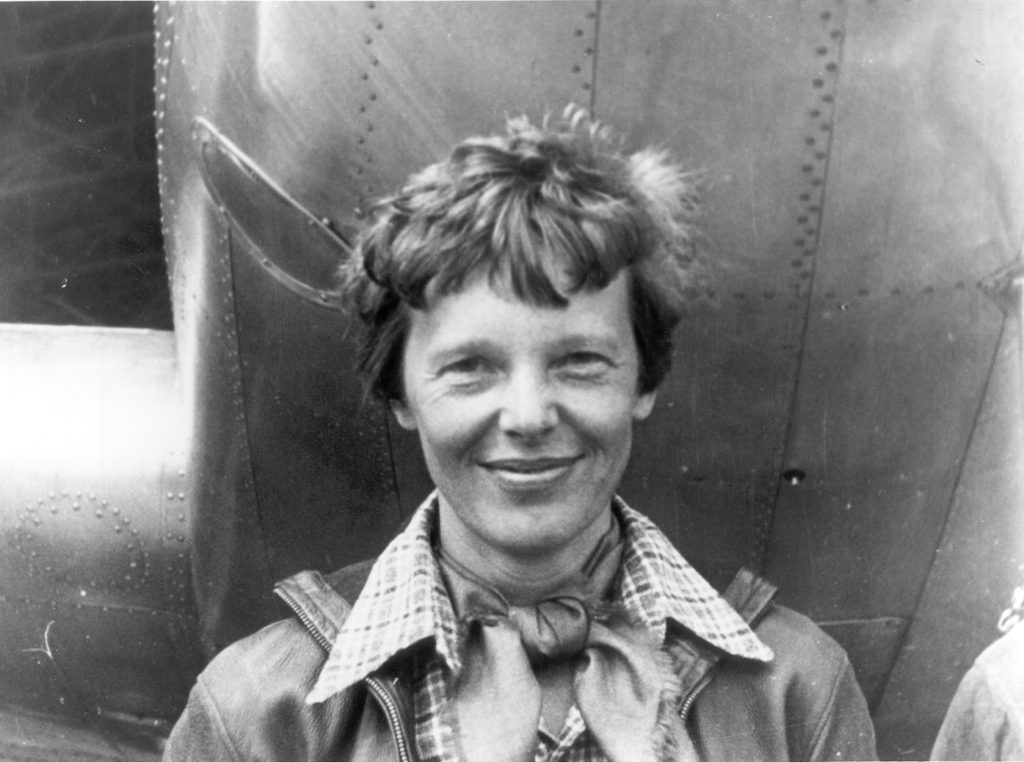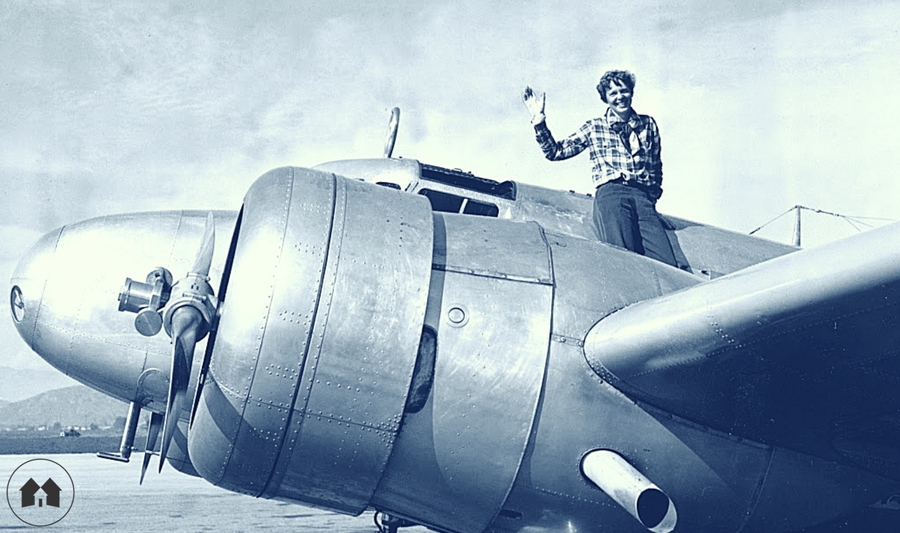There have been many amazing individuals throughout history. Few people would disagree that American aviator Amelia Earhart was one of them. Her story is one of bravery and adventure, while at the same time, it is shrouded in mystery.
Born in Kansas on July 24, 1897, Amelia lived primarily with her maternal grandparents until the age of 12. She was essentially homeschooled (mostly by a governess) during those years, and entered public school for the first time in 1909 as a seventh grader. Her parents relocated several times in the following years, due to her father’s irregular employment and the death of both her grandparents. Amelia eventually graduated from Chicago’s Hyde Park High School in 1916.
Towards the end of World War I, Amelia paid a visit to her younger sister, who was attending school in Toronto, Canada. Spurred on by her pacifist heart, young Amelia received Red Cross training and volunteered as a nurse in a Canadian veterans hospital. After the armistice of 1918, she attempted to return to her education, but left after one year in college.
At an airshow in 1920, Earhart took her first ride in an airplane. She was immediately enamored, and began to take flying lessons from a woman named Neta Snook (the first American female to run her own aviation business and a commercial airfield) in Long Beach, CA. On December 15, 1921, when Amelia received her pilot’s license from the National Aeronautics Association, she was only the 16th woman to have achieved this goal.
In 1928, George Palmer Putnam—who later married Amelia—offered her a job in an airplane crew that planned to cross the Atlantic ocean. On June 18-19, 1928, they flew from Newfoundland to Wales. Although she didn’t do any of the actual flying, “Lady Lindy” (as she came to be known by many) became instantly famous as “the first woman to fly over the Atlantic.”  The public response was so tremendous that from then on, Putnam acted as Amelia’s manager and publicist, scheduling many flights and speaking engagements for her. George Putnam and Amelia Earhart were eventually married in 1931.
The public response was so tremendous that from then on, Putnam acted as Amelia’s manager and publicist, scheduling many flights and speaking engagements for her. George Putnam and Amelia Earhart were eventually married in 1931.
On May 20-21, 1932, Amelia became the first woman to complete a solo flight across the Atlantic. After that, she went on to set numerous flying records. From 1931 to 1937, she achieved the following milestones:
- An altitude record.
- The fastest nonstop flight across the united States and back.
- The fastest nonstop transcontinental flight by a woman.
- The first woman to fly across both the Atlantic and the Pacific.
- The first person to fly solo across the Pacific from Hawaii to California.
- The first person to fly solo from Los Angeles to Mexico City.
- She set a speed record for the fastest east-west flight from Oakland, California to Honolulu, Hawaii.
Earhart went on to break many more speed records (including her own) and collect a plethora of awards and honors, making her famous around the world.
In the summer of 1937, shortly before her fortieth birthday, Amelia Earhart (along with her navigator, Fred Noonan) launched a daring attempt to become the first pilot to circumnavigate the earth at the equator. On July 2nd, the world was shocked and saddened to learn that they had disappeared over the Pacific somewhere between Lae, New Guinea, and their next scheduled stop on tiny Howland Island in the middle of the Pacific Ocean. The U.S. Navy conducted an exhaustive search—the largest in history at that time—for the missing plane in an attempt to find her. Despite deploying 66 aircraft and nine ships, neither the plane nor survivors were spotted.
George Putnam went on to fund many more searches for his wife, to no avail. In 1939, Earhart was legally declared dead.
You would think the story would end there, but as with all mysteries, there is always more to the story.
There are countless theories surrounding the fate of Earhart and Noonan. The majority of experts believe they perished at sea when their plane ran out of fuel. Another theory suggests that the duo flew without radio contact after their last radio signal, and landed on the uninhabited Nikumaroro reef, a tiny island in the Pacific. It is believed they lived here for a time before ultimately dying. Several on-site investigations have turned up artifacts—tools, clothing, an aluminum panel, bones, a piece of Plexiglas the exact width and curvature of the window to the plane they were flying—that would seem to support this theory. In May of 2012, on a remote island in the south Pacific close to the other discoveries, searchers even found a jar of freckle cream believed to belong to Earhart.
From here, the theories gets a little sci-fi: speculations from suicide to spy missions abound. In 2017, a facial-recognition expert claimed a photo had emerged that included Earhart and Noonan, seemingly supporting the theory that the two were picked up by Japanese soldiers and kept as prisoners. However, others claim the same photo had been published in 1935, two years before Earhart’s disappearance.
We will probably never know exactly what happened to Amelia Earhart. Regardless of what we choose to believe, we can all agree to celebrate her inspiring achievements, during her life as a pioneer in both women’s rights and aviation.
